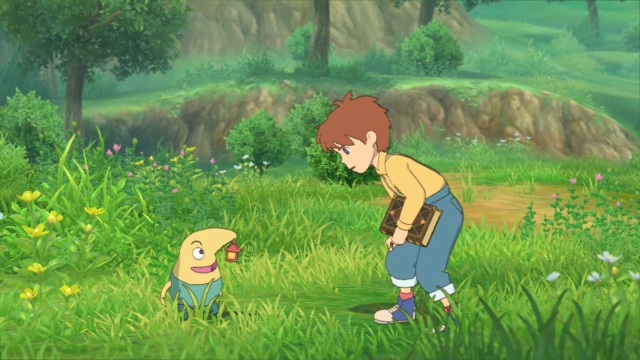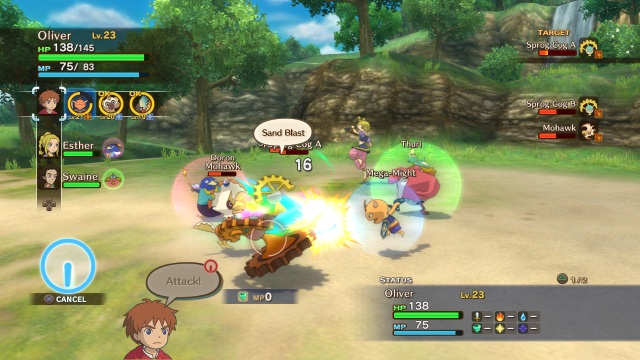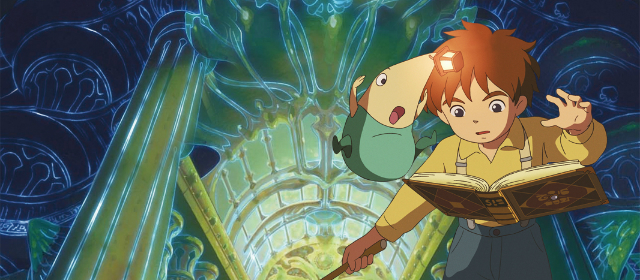It was a long wait for Ni No Kuni: Wrath of the White Witch.
As it turns out, the wait wasn’t without good reason. Since Ni No Kuni’s release in Japan, we have witnessed a studio’s superhuman effort to mould a quintessentially Japanese RPG into an adventure that spans cultures, continents and the age gap, to deliver a game worthy of the Ghibli name.
That time and effort was all poured into localisation and it is a reminder of something very important: That you truly need every department working together to deliver great story in a game. The necessity of integrating story and and gameplay in a meaningful way, the core of this column, is a point that has been made here many times. Another point, made exactly as many times, is that achieving this is far from simple. In reality every department, from level design to gameplay design, programming, testing, art and music, need to be perfectly in sync for the game to deliver its desired message. When it comes to translating a game from one language to another, the localisation becomes another challenge for a studio to overcome.
As someone whose first language is English (and who isn’t quite old enough to remember “All your base are belong to us” from Zero Wing) it is easy to overlook how vital the localisation process is to delivering a story. Most games are written in English first, then translated out and localised across the rest of the world. The question always used to be how much narrative integrity did gamers have to lose when they played a game not written in their mother tongue?
The question now, in this post Ni No Kuni world, is less what players can expect to lose, and rather how much can gamers gain by thorough, passionate localisation of a fascinating foreign IP?

Ni No Kuni sets the bar for video game localisation work. It is hard to think of other games that come close. However, it would be easy to look at Ni No Kuni, and the heritage of Studio Ghibli, and take this kind of work for granted. After all, the film studio’s work has been lovingly translated for a number of years. DVD releases of Spirited Away, Howl’s Moving Castle and Arriety (to name a few) have always had wonderful English translations, often featuring premium TV and movie talent. Thinking that way would be a mistake. At the very least, the performances (and doubtless the names) of Christian Bale, Olivia Colman and Mark Strong have raised the profile of the Ghibli films outside of Japan, opening up audiences who dislike subtitles to the magic of Ghibli story-telling. What should be appreciated is the fact that this lesson has been learned and applied to Level 5’s game.
Drippy, Lord High Lord of the Fairies, is the game’s shining, localised, star, and that is “fair do’s”. Steffan Rhodri (interviewed for GodisaGeek by Sean Smith just last week) does a phenomenal job with the voiceover and, when that is combined with just how unusual it is to hear a welsh (and, in fact, any regional UK) accent in a game, it makes the character leap out of the screen; exciting, amusing and amazing the player in equal measure. The entire script entices the player with its in-jokes, strongly British cultural references and attention to detail. We aren’t simply being tricked by funny accents and (mostly) excellent voice acting. For one thing, not every line of dialogue is spoken, most of the dialogue is delivered through text. However, characters like Drippy retain their personality throughout every line they deliver. This is credit to the writing team, Steffan Rhodri (who establishes Drippy instantly, leaving his voice ringing in the player’s eardrums for the rest of the game) but also to the narrative design team at Level 5 who introduce Drippy with full voiceover in a beautiful hand-drawn Ghibli cutscene. He is imprinted onto your brain from the earliest moments of the game. The wonderful localisation work then prevents any character inconsistencies and losses in immersion.
It isn’t just Drippy who is beautifully written. There are many characters who are wonderfully funny, whimsical and interesting, all thanks to great dialogue and voice acting. This dedication to humour extends beyond the dialogue though, and it explains why the localisation process was such an arduous one. As the game progresses (no spoilers here) the player collects familiars, each of a particular type and all with an automatically generated name. It still raises a smile to think of collecting a Niad, a small spell-casting, water-type familiar, and have the game name her (for she instantly became a ‘her’) “Gemma”. It took about twenty minutes to get the joke. There are so many sequences throughout the game (which are impossible to explain without spoiling, so you’ll have to trust me) that rely on this kind of humour. Puns and self-aware jokes populate the script so frequently that it feels as if some areas of the game must have had animations and dialogue boxes re-worked to fit in some incredibly “United-Kingdom-ey” exchanges. They are always a joy. There is a feeling when playing Ni No Kuni that the game was written just for you, that no-one could be getting more from the dialogue than you are. Ni No Kuni gives the impression that it really matters to the developer and publisher that the player love this game. The localisation process doesn’t seem to be just about making the game understandable (Read: Saleable) outside of Japan. It feels as if there was a passion in the localisation team to make the player connect with Ni No Kuni. It is a horrible old cliché to say that you can “feel the love” poured into a game. With Ni No Kuni you can “feel the love” put into the game, but you appreciate it differently. You feel thankful to the localisation team when you read a little joke that only works in English, or Drippy says something that a welsh friend of yours says. It isn’t just an acknowledgement that the game pays attention to detail, it is an appreciation of the effort that went into personalising the details just for you. It is a another level of enjoyment, like a girlfriend buying you an iPod but then filling it with your favourite music before you get it; every song appreciated that much more because, somehow, it is just for you. You are grateful for the love that went into this game.
The highest praise you can give to Ni No Kuni is the moments when it is obvious that the game is in Ghibli territory. Ghibli territory is very similar to Pixar territory, the hallowed ground where a story isn’t for kids or for adults, it’s just a wonderful tale that appeals to all ages. It is a higher class of story-telling, and in this sense it is truly worthy of the Ghibli name. What is astonishing is that most of this comes through the expressiveness and humour of the characters, the quality of the localisation. The early parts of the story are powerful and emotive, but it quickly descends into the sort of “go here, go there, kill this, kill that” that players expect from JRPGs. Equally, the voice acting isn’t incredibly consistent. There are star turns (beyond Drippy) but other main characters can often grate, with Oliver’s breathy earnestness the most frequent offender. Ni No Kuni is carried by shear strength of personality: The way that the game makes you laugh and smile in unexpected moments and when, where most localised games chug along with literal translations and clunky dialogue, Ni No Kuni lifts you with a surprise or a joke that, through its quality, feels like it doesn’t belong in a game. Only it fits perfectly.

This all might seem quite tangential to game narrative. Actually, it is at its core. Games like Ni No Kuni only work if you care about what is going on, otherwise they become efforts in grinding that are better enjoyed online in MMOs, or simply discarded for something better. In all games, immersion is the key making the player care. If the dialogue is poorly translated or if the text doesn’t make sense, then that immersion is lost. Almost as important for a game like Ni No Kuni is the reality that, if the amazing Ghibli-style character design, full of mystery and magic and whimsy, isn’t complemented by dialogue and scripting worthy of it, then it is just wasted. In the case of Ni No Kuni, that would have almost certainly been the greater crime.
That’s why we should be thankful that we waited for Ni No Kuni: Wrath of the White Witch. The time gave Level 5 and Namco a chance to squeeze their game full of Ghibli magic, a chance they didn’t waste. They did it by making a game that is as much for each individual as it is for everyone else.
Pure Ghibli magic, with nothing lost in the translation.






